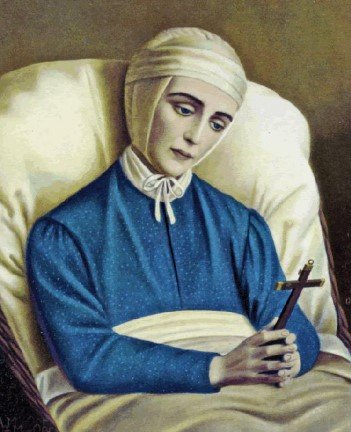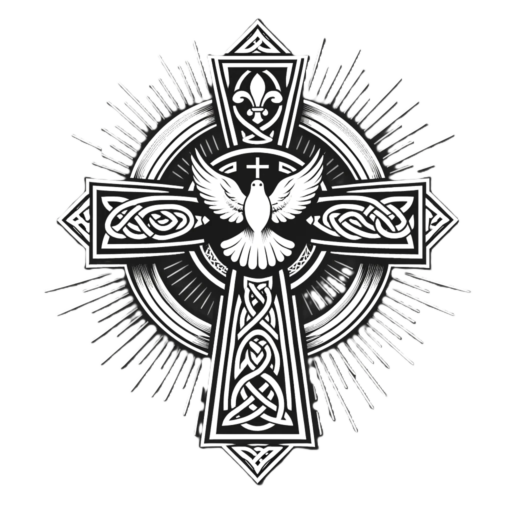Saint James the Greater: Apostle & First Martyr | Feast Day July 25th
Saint James the Greater: Apostle & First Apostle to be Martyred | Feast Day July 25th. Known as Santiago Matamoros, patron of Spaniards, according to tradition he led Christian forces to victory against the Moors. One of the three closest to the Blessed Virgin Mary and Jesus, as revealed by scripture and Spanish mystic Ven. Mary of Agreda. This presentation explores his life, martyrdom, and legacy as the first Apostle to be martyred.

Saint James the Greater

Biographical Highlights
- St. James the Greater: Apostle, son of Zebedee and Salome, and brother of St. John the Evangelist.
- First Martyr Apostle: He was the first Apostle to be martyred.
- Patron Saint of Spain: Known as Santiago, his name became a war cry during the fight against the Muslims.
From the Visions of Blessed Anne Catherine Emmerich

Blessed Anne Catherine Emmerich had a vision of St. James, providing vivid details of his journeys and divine interventions:
- Travels and Persecution:
- Traveled from Jerusalem to Sicily, then to Spain, particularly Cadiz.
- An Angel saved him from being murdered when he was not well received.
- Left seven disciples in Spain before returning to Saragoza, where he converted many despite constant threats.
- Divine Protection and Guidance:
- Often enemies threw vipers at him, but he held them without harm.
- Imprisoned in Granada with disciples, he was saved by angels at Our Lady’s command, leading to his mission in Galicia.
- Marian Apparition:
- Praying with disciples near Saragoza’s walls, seeking guidance, he received a vision from the Virgin Mary.
- Angels set a column of light as a sign to build a church, marking the origin of the devotion to Our Lady of the Pillar.
- Our Lady, appearing on the column, directed him to establish the church and return to Jerusalem.
- Final Journey:
- After building the church, St. James visited the Holy Virgin in Ephesus, who predicted his martyrdom.
- In Jerusalem, he was captured, continued preaching on his way to execution, and was beheaded. His body was later brought to Spain.
3 Facts about Saint James the Greater
According to Ven. Mary of Agreda, Spanish Mystic
1

Beloved by Jesus and Mary
“Next to Saint Peter and Saint John, Saint James was most beloved by the Blessed Mother.”
-Ven. Mary of Agreda (Volume III, City of God)
Saint James, along with Peter and John, was particularly beloved by Jesus and the Blessed Mother. This special relationship indicates his significant role among the apostles and his close connection to the core of Jesus’ ministry.
2

Witness to Jesus' Sorrow and Humanity
“There was still another mystery contained in this sorrow of the Lord, which referred especially to the three Apostles, Saint Peter, John, and James. For, more than all the rest, they were imbued with an exalted conception of the greatness and Divinity of their Master… In order that they might be confirmed in their belief of His being a man capable of suffering, it was befitting that they should know as eye-witnesses His truly human sorrow and affliction.”
-Ven. Mary of Agreda (Volume III, City of God)
Saint James was one of the three apostles chosen to witness Jesus’ deep sorrow and human affliction in the Garden of Gethsemane. This experience was crucial for reinforcing their understanding of Jesus’ true humanity and His capacity to suffer, which was essential for their mission to testify about Jesus’ life and Passion.
3

Strengthening the Church's Faith
“By the testimony of these three Apostles who were distinguished by such favors, the holy Church was afterwards to be well fortified against the errors, which the devil would try to spread against the belief in the humanity of Christ our Savior. Thus would the rest of the faithful have the consolation of this firmly established belief in their own affliction and sorrow.”
-Ven. Mary of Agreda (Volume III, City of God)
By being a witness to Jesus’ prayer and suffering, Saint James helped fortify the early Church’s faith against heresies that denied Christ’s humanity. His testimony, along with that of Peter and John, provided the Church with a solid foundation of belief in Jesus’ dual nature as both divine and human, offering consolation and strength to the faithful in their own trials.

Why is St. James called Santiago Matamoros?
Legend of Santiago Matamoros:
- Miraculous Appearance: According to tradition, during the Battle of Clavijo in 844 AD, St. James miraculously appeared on a white horse, wielding a sword, and led the Christian forces to victory against the Moors.
- Significance: This event is a key part of the Reconquista, the period when Christian kingdoms sought to reclaim the Iberian Peninsula from Muslim rule.
- Inspiration: His miraculous appearance inspired Spanish soldiers and became a symbol of divine support for their cause. The battle cry “¡Santiago y cierra, España!” (“St. James and strike for Spain!”) was used in battles.
Historical and Cultural Significance:
- Cultural Icon: The image of Santiago Matamoros is deeply embedded in Spanish culture. He is often depicted as a knight on horseback, wearing armor, holding a sword or banner, and trampling defeated Moors.
- Prominent Depictions: This portrayal is especially prominent in Spanish churches and cathedrals, like Santiago de Compostela, where his relics are believed to be housed.
Artistic Representations:
- Cathedral of Santiago de Compostela: The entrance features a carving of Santiago Matamoros, highlighting his role as a warrior saint.
- Iconography: Statues and paintings often show St. James mounted on a white horse, signifying his legendary intervention in battles and his patronage over Spain.
Cultural and Religious Impact:
- Symbol of Resistance: St. James as a warrior on horseback reflects his importance as a symbol of resistance and victory for the Christian Spanish people.
- Patron Saint: His portrayal emphasizes his role as a protector and patron saint of Spain, reinforcing the belief in divine intervention and support during conflicts.
Summary:
St. James the Greater is portrayed on a horse due to the legend of Santiago Matamoros. This legend symbolizes his miraculous intervention in battles during the Reconquista, making him a powerful figure of faith and national identity in Spain.
Image Linked to 4 Volume Set on Amazon
“She [Mary] knew more of Him than any other creature and more than all of them together; and according to her knowledge She rendered due honor, teaching even the Seraphim how to reverence Him.”
-Ven. Mary of Agreda, Mystical City of God, Vol. I, 562
Learn more about this great set on Amazon

